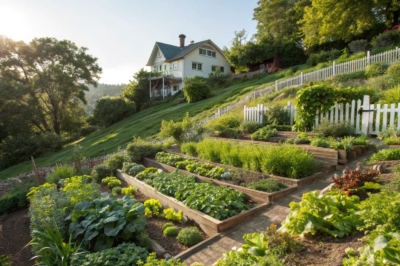1. Terraced Beauty
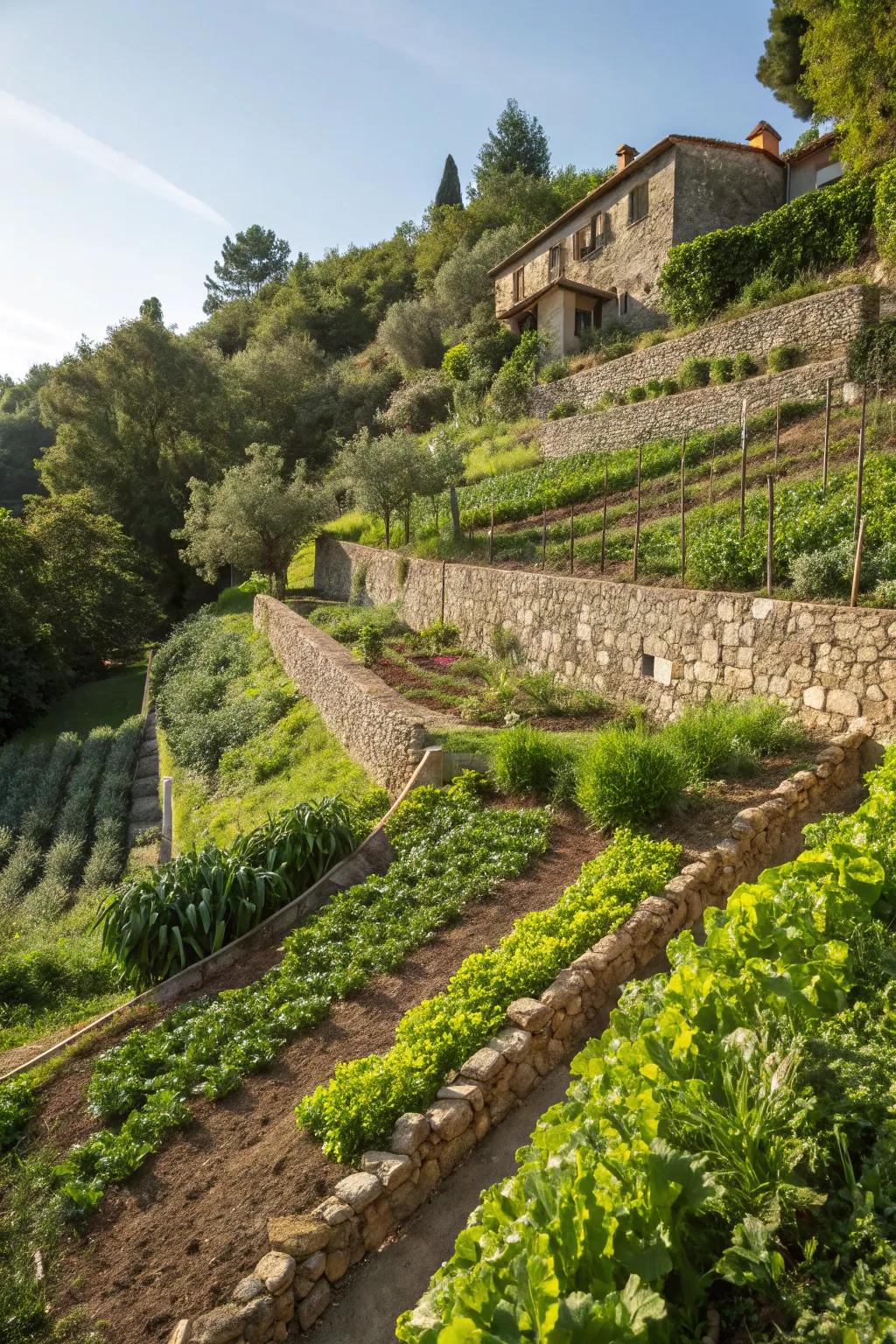
Building terraced gardens is a fantastic way to manage a slope and create level planting areas. Personally, I love how the layers add a structured elegance to my hill.
Check if these fit your needs:
- Garden Terrace Stone Kits: Transform your slope with these stone kits for sturdy, stunning garden terraces.
- Plant Support Trellises: Enhance your terraces with trellises for climbing plants, adding height and texture.
- Drip Irrigation Systems: Ensure efficient watering on slopes with drip systems designed for terraced gardens.
2. Shade Solutions
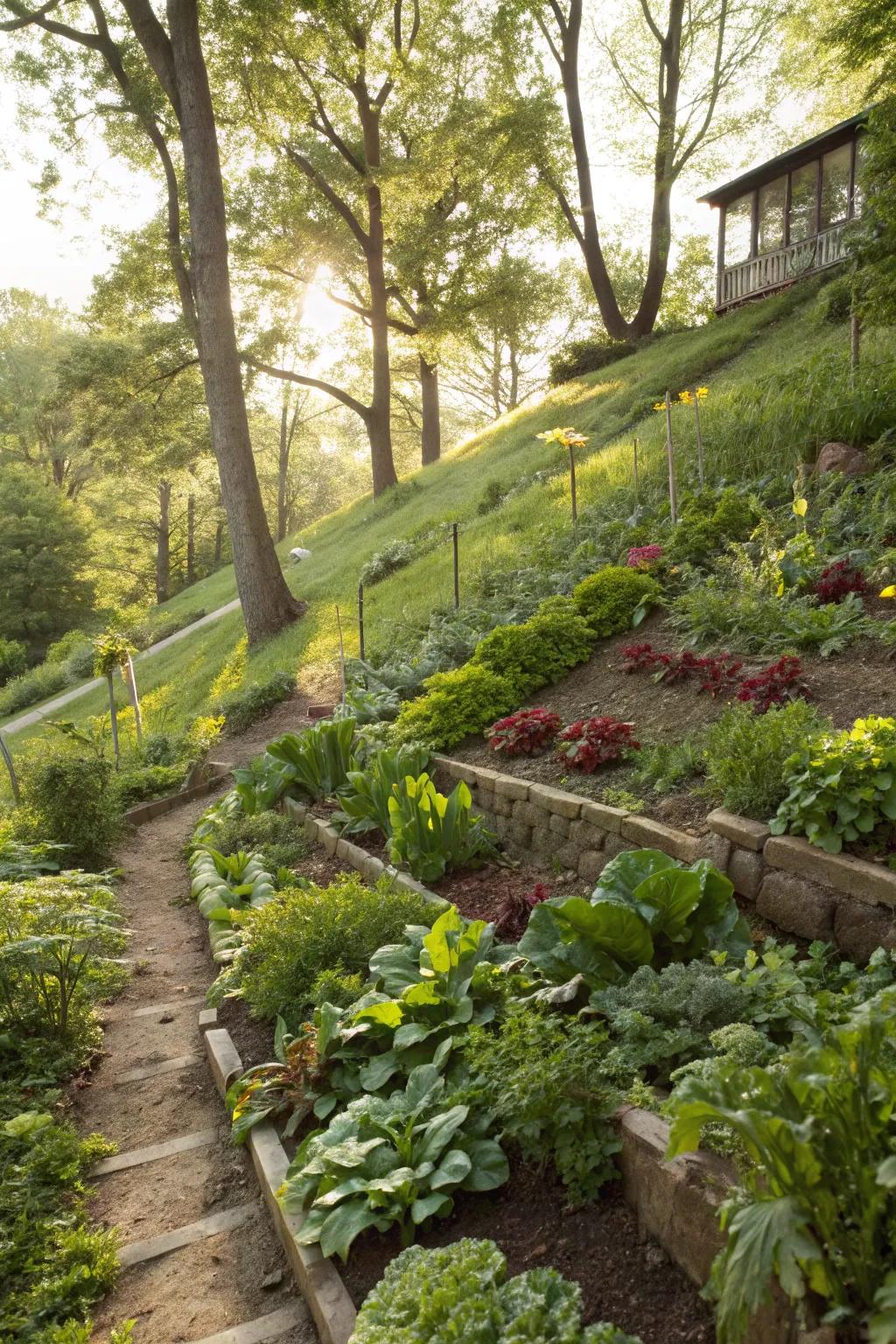
Incorporate shade-tolerant plants if parts of your garden are less sunny. It’s been rewarding to see greens thrive in the gentler light.
Check these products out:
- Shade Cloth for Gardens: Protect your shade-tolerant plants with breathable cloth, enhancing growth in sun-dappled areas.
- Adjustable Plant Stands: Elevate your shade-loving plants for better light access and healthier growth on slopes.
- Garden Mulch for Moisture Retention: Keep soil moist and cool for your shade-tolerant greens with natural garden mulch.
3. Vertical Veggies
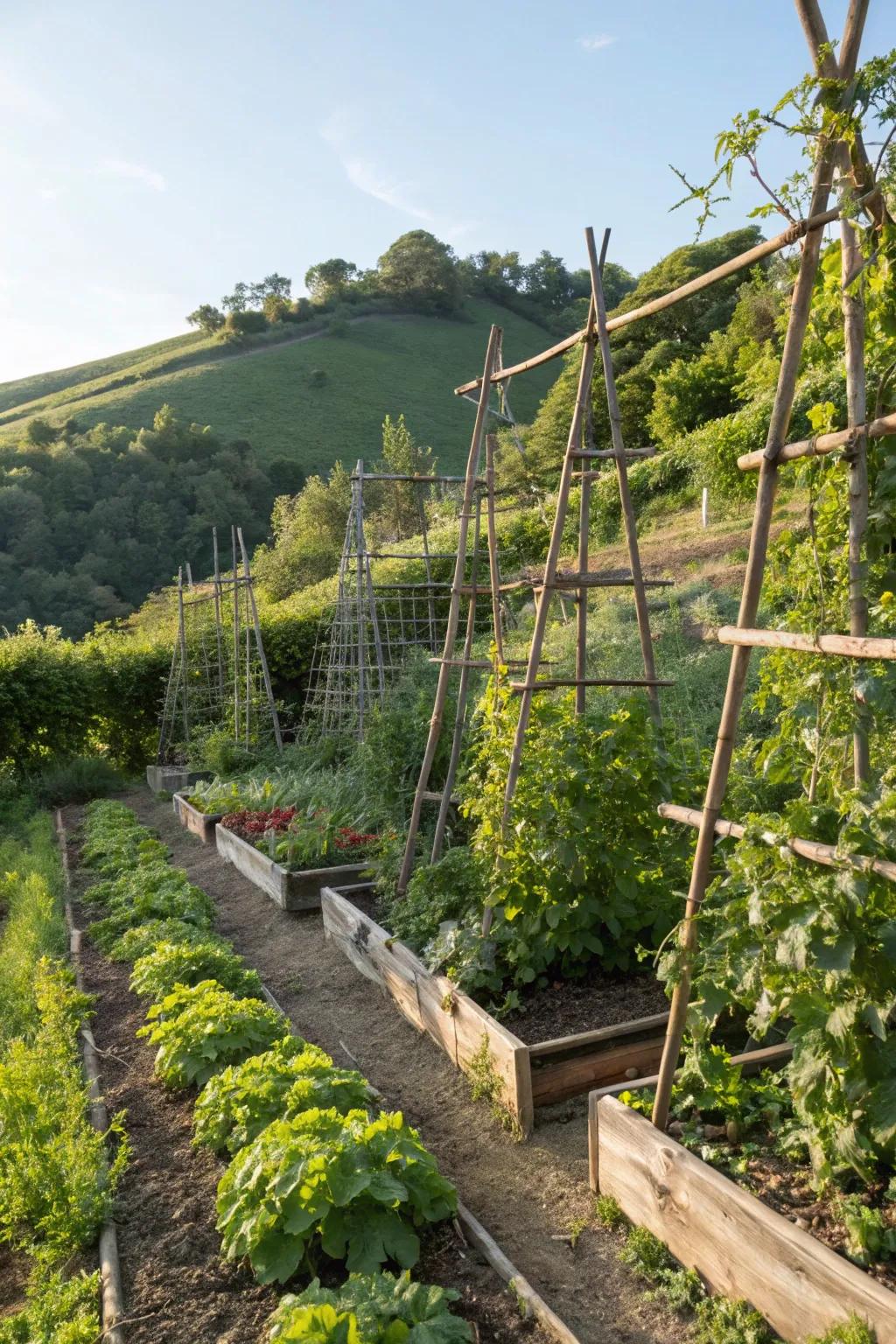
Maximize space with vertical gardening techniques like trellises. It’s amazing how much more you can grow upwards!
Try these:
- Garden Trellis: Boost your garden’s yield with a sturdy trellis to support climbing vegetables effortlessly.
- Vertical Planter: Optimize your gardening space with a vertical planter, perfect for small areas and hillside gardens.
- Plant Support Stakes: Ensure your plants grow upright with reliable support stakes, ideal for all climbing varieties.
4. Raised Bed Revolution
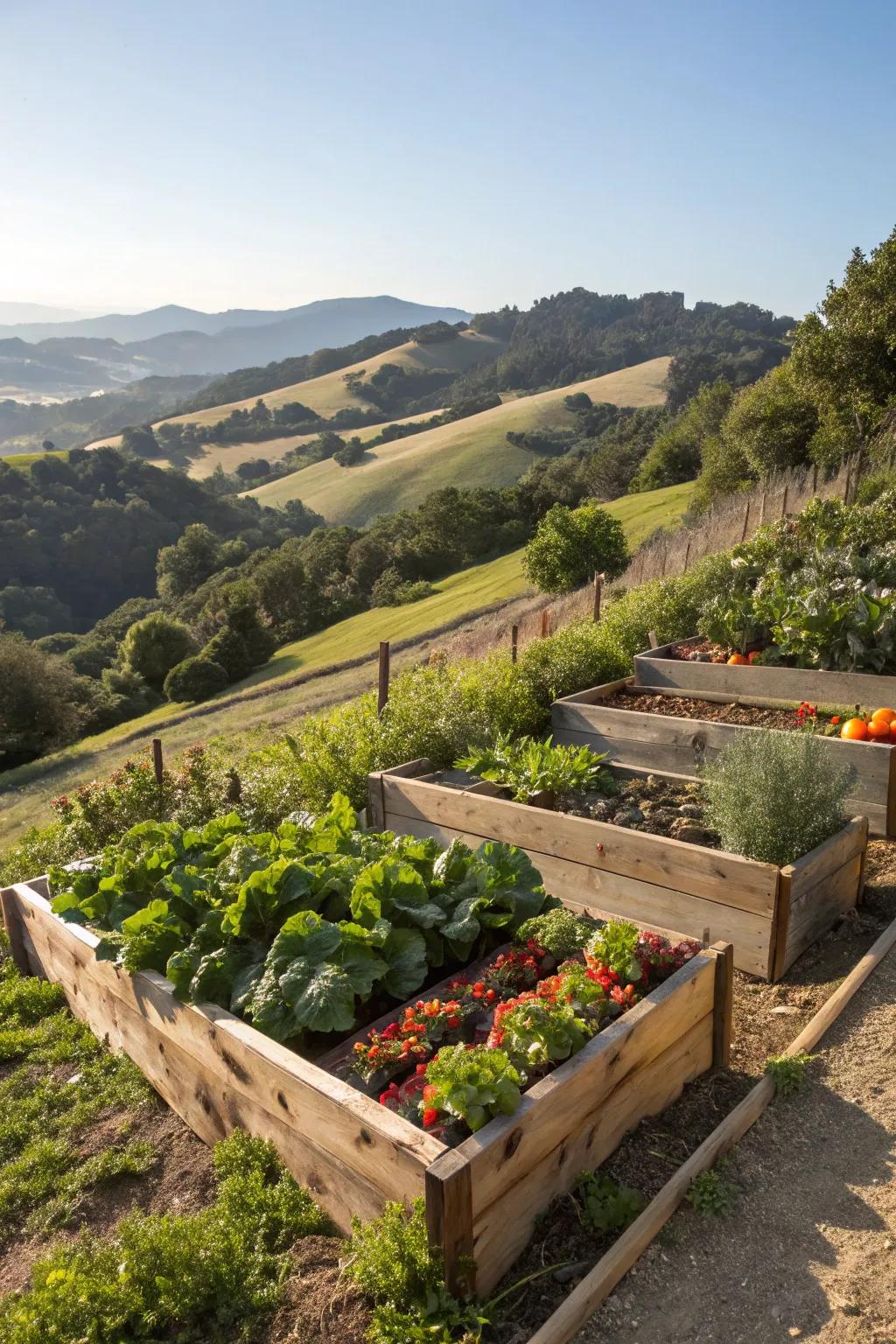
Using raised beds on a hill helps combat soil erosion and improves drainage. I’ve found that wooden frames blend beautifully with the landscape.
Items that may come in handy:
- Wooden Raised Garden Bed Kit: Elevate your garden setup with a durable, attractive frame that suits any landscape beautifully.
- Heavy Duty Garden Staple: Secure your raised beds on steep hillsides effectively to combat soil erosion and enhance stability.
- Soil Moisture Meter: Ensure optimal watering for your hillside garden by monitoring soil moisture levels with ease.
5. Retaining Wall Wonders
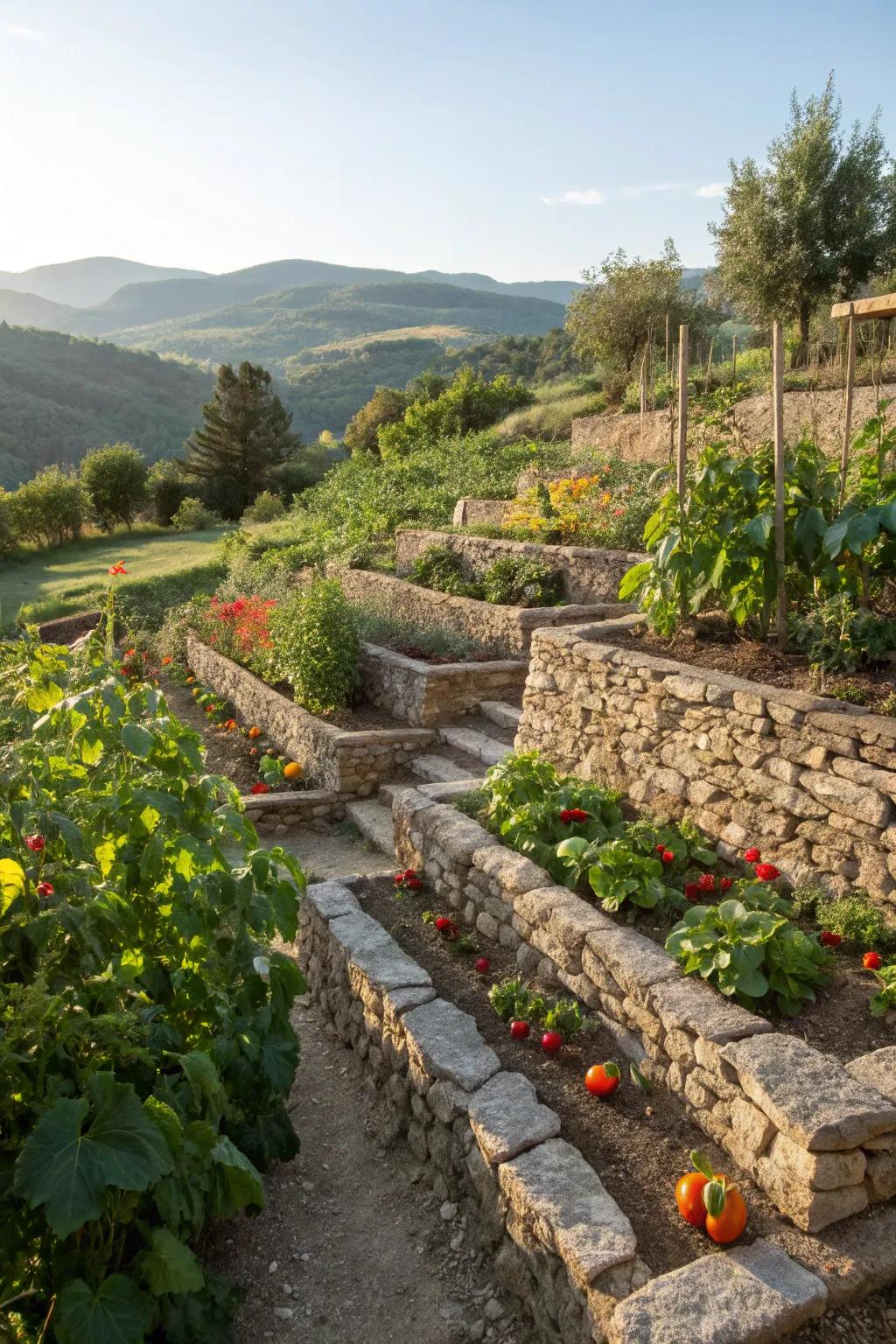
Use retaining walls to create stability and add a chic look. I prefer natural stone for a timeless appeal.
Consider these options:
- Natural Stone Retaining Wall Blocks: Elevate your garden with durable stone blocks that offer stability and timeless beauty.
- Heavy-Duty Retaining Wall Geogrid: Ensure stability and soil retention with tough geogrid support for your retaining walls.
- Landscaping Tools Set for Stone Walls: Equip yourself with the right tools for creating stunning and sturdy retaining walls.
6. Water-Wise Wonders
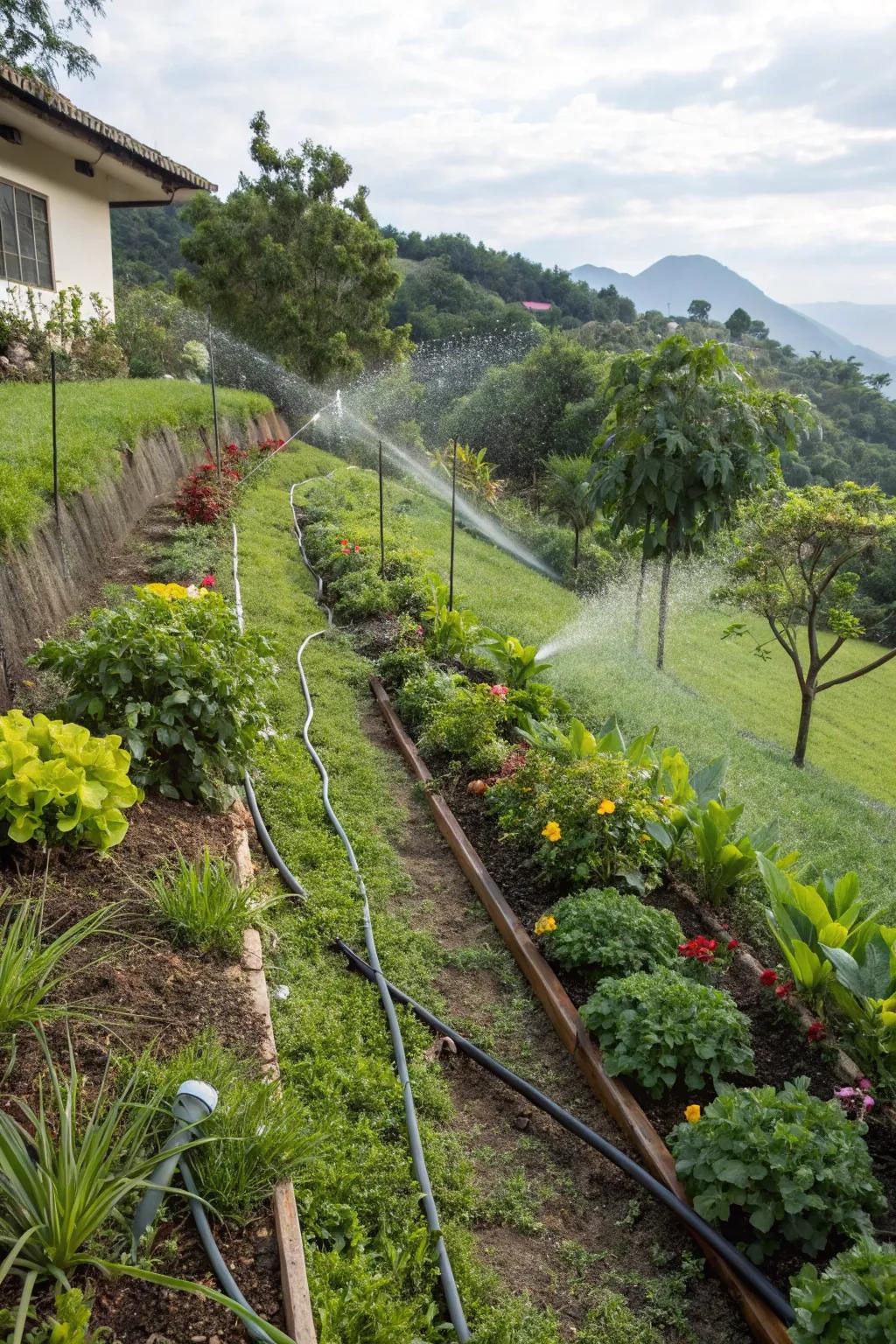
Install a drip irrigation system to conserve water and ensure consistent moisture. It’s been a lifesaver during dry spells.
Possibly helpful picks:
- Complete Drip Irrigation Kit: Transform your garden with a drip kit, saving water and ensuring even plant hydration.
- Adjustable Drip Emitters: Maximize water efficiency and adjust flow to suit each plant’s needs with versatile emitters.
- Automatic Watering Timer: Set a watering schedule effortlessly with a timer and maintain garden health during dry spells.
7. Colorful Companions

Mix in ornamental plants for a splash of color. My marigolds have been both beautiful and beneficial for pest control.
Explore these options:
- Marigold Seed Pack: Add vibrant color and pest protection to your garden with easy-to-grow marigold seeds.
- Ornamental Plant Seed Mix: Enhance your hillside garden’s appeal with a diverse mix of ornamental plant seeds.
- Natural Pest Control Spray: Keep your garden healthy and vibrant with an effective, eco-friendly pest control solution.
8. Mulch Magic
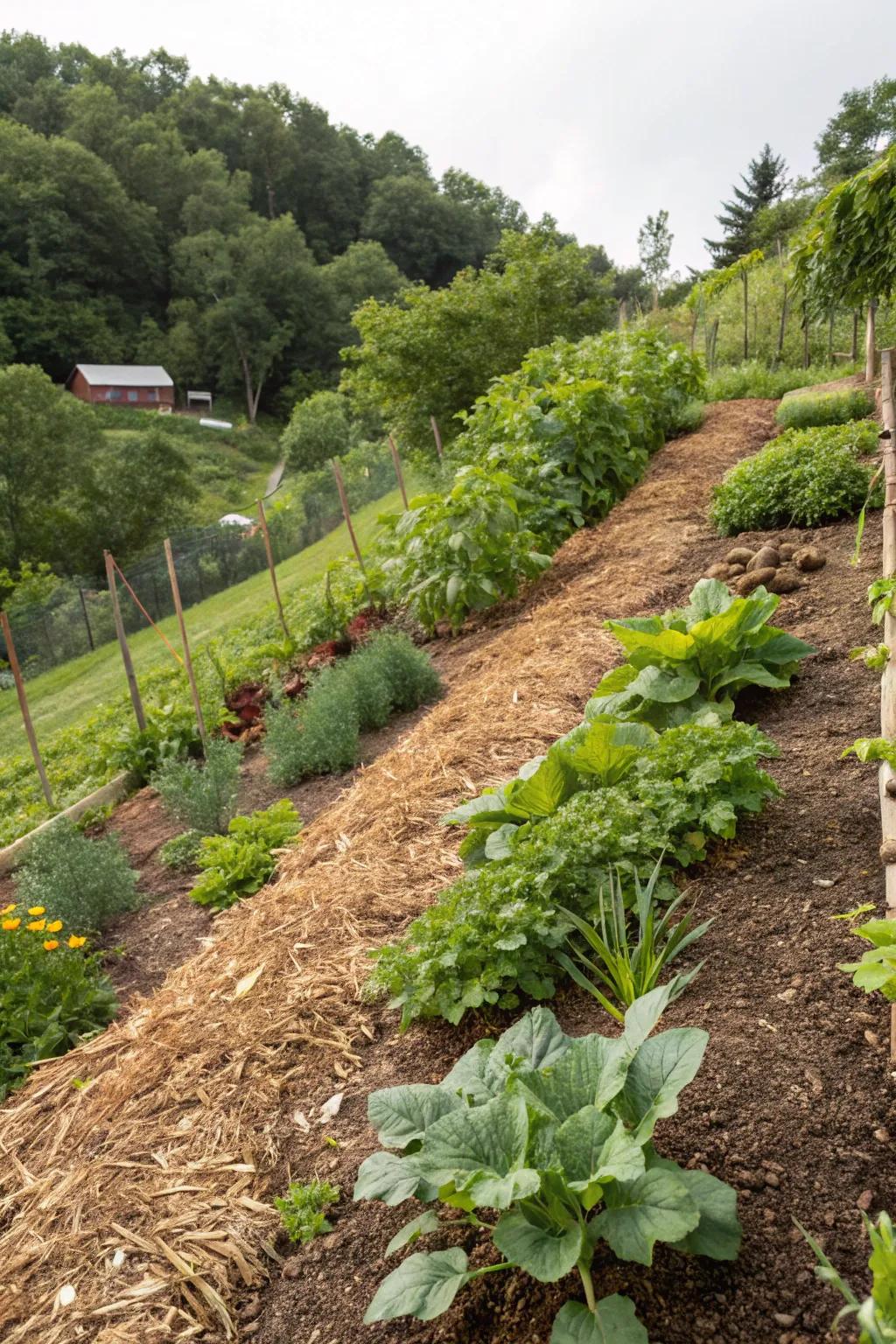
Apply mulch to retain soil moisture and reduce erosion on slopes. It’s like a cozy blanket for your plants.
These products might help:
- Natural Straw Mulch: Protect your garden with straw mulch to retain moisture and prevent erosion on slopes.
- Wood Chip Mulch: Enhance your hillside garden with wood chip mulch for lasting moisture retention and aesthetics.
- Organic Bark Mulch: Apply organic bark mulch to enrich soil and safeguard your plants on hilly terrains.
9. Seasonal Surprises
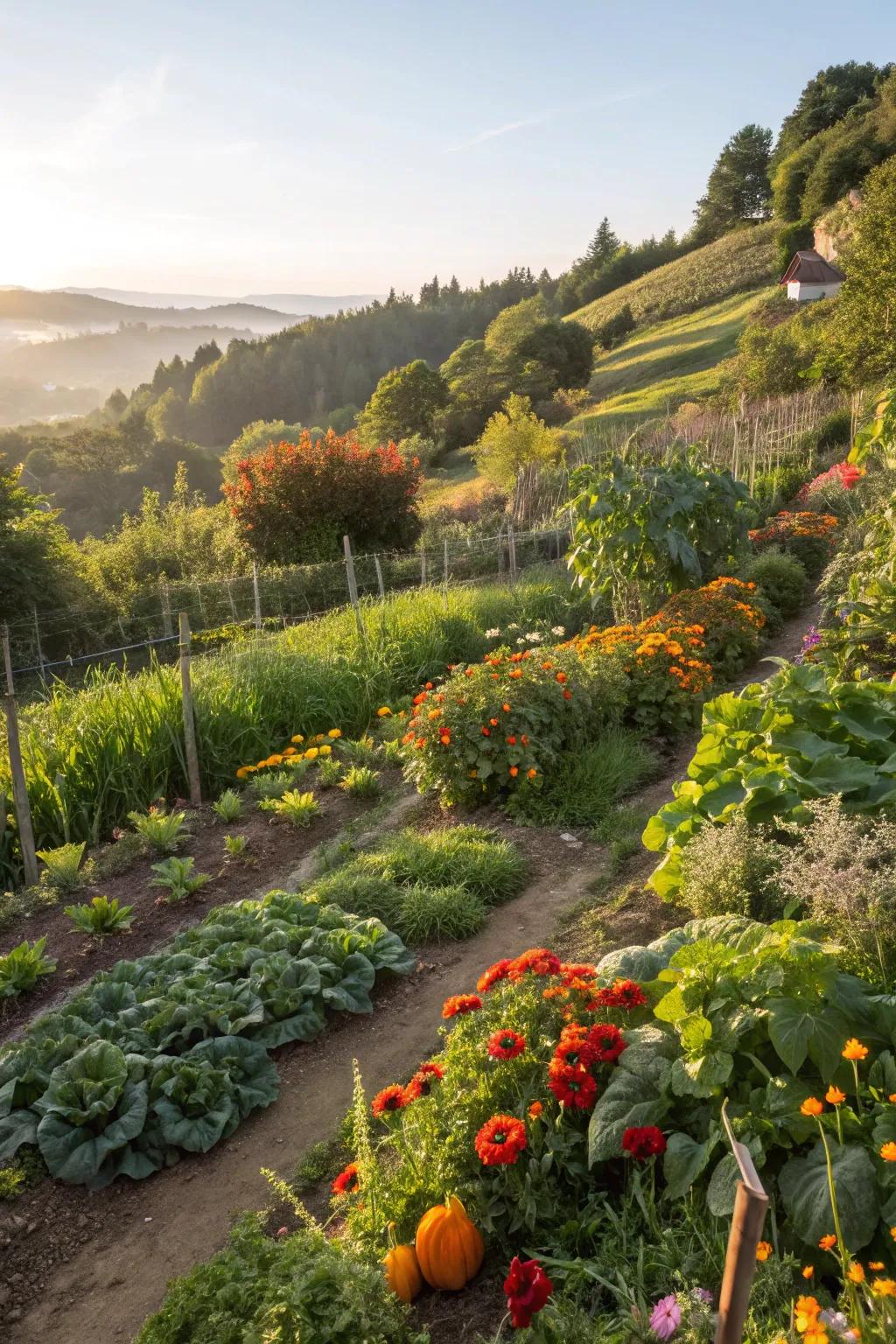
Experiment with seasonal planting to keep your garden productive year-round. I love watching the transformation with each season’s bounty.
A few things you might like:
- Raised Garden Beds: Elevate your hillside garden with raised beds for better drainage and easier access.
- Seasonal Vegetable Seed Packets: Diversify your garden with seasonal seeds for year-round fresh produce.
- Gardening Tool Set: Equip yourself with essential tools for a thriving hillside vegetable garden.
10. Pathway Practicality
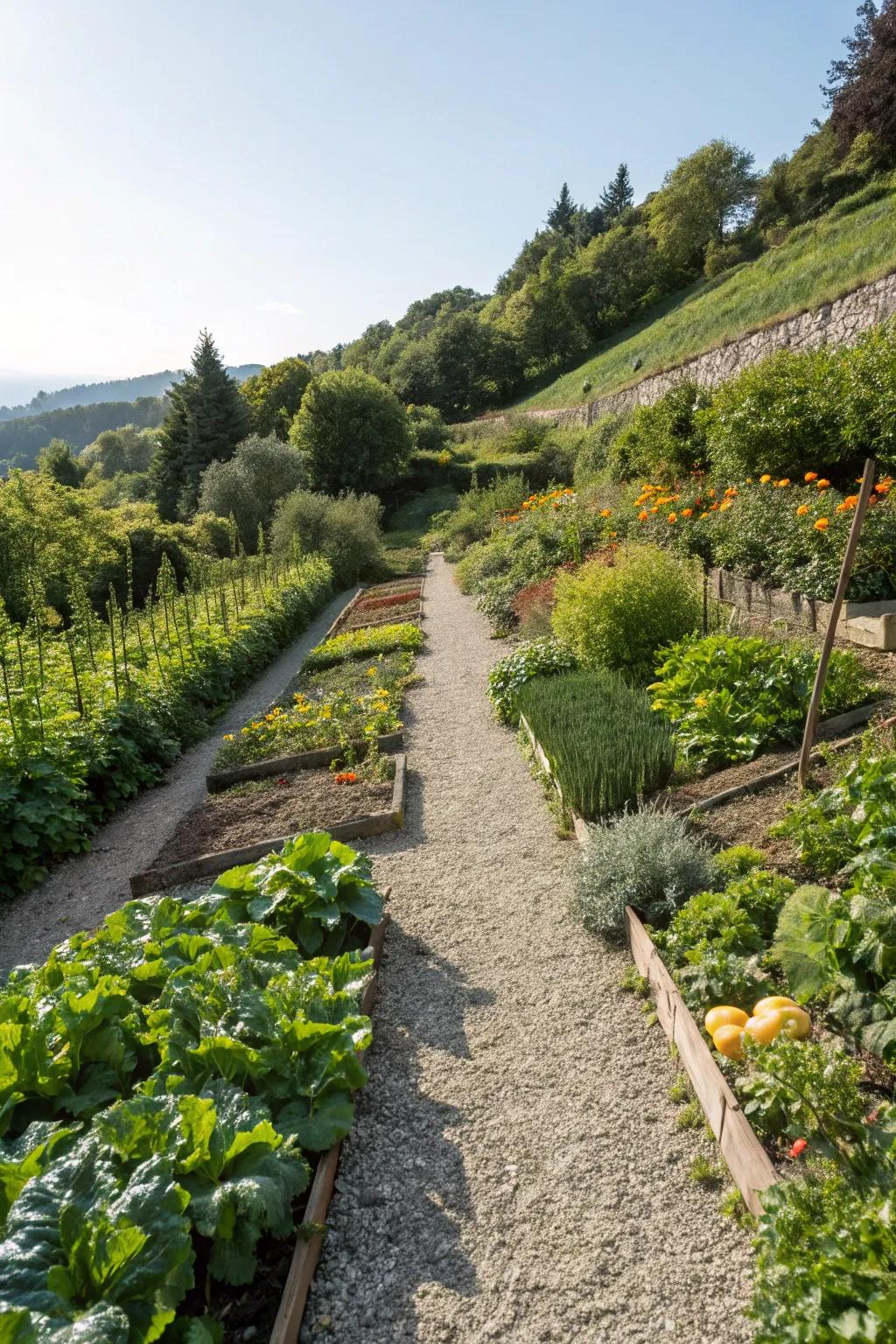
Adding pathways between your beds not only eases access but also adds charm. I adore using gravel paths for their rustic appeal.
Products that could assist:
- Garden Gravel Stones: Transform your garden with rustic gravel paths for easy access and added charm.
- Garden Path Edging: Define your pathways elegantly with durable garden path edging for a neat look.
- Hand Rake for Gravel: Keep your gravel paths tidy and well-maintained with a versatile hand rake.
11. Compost Corner
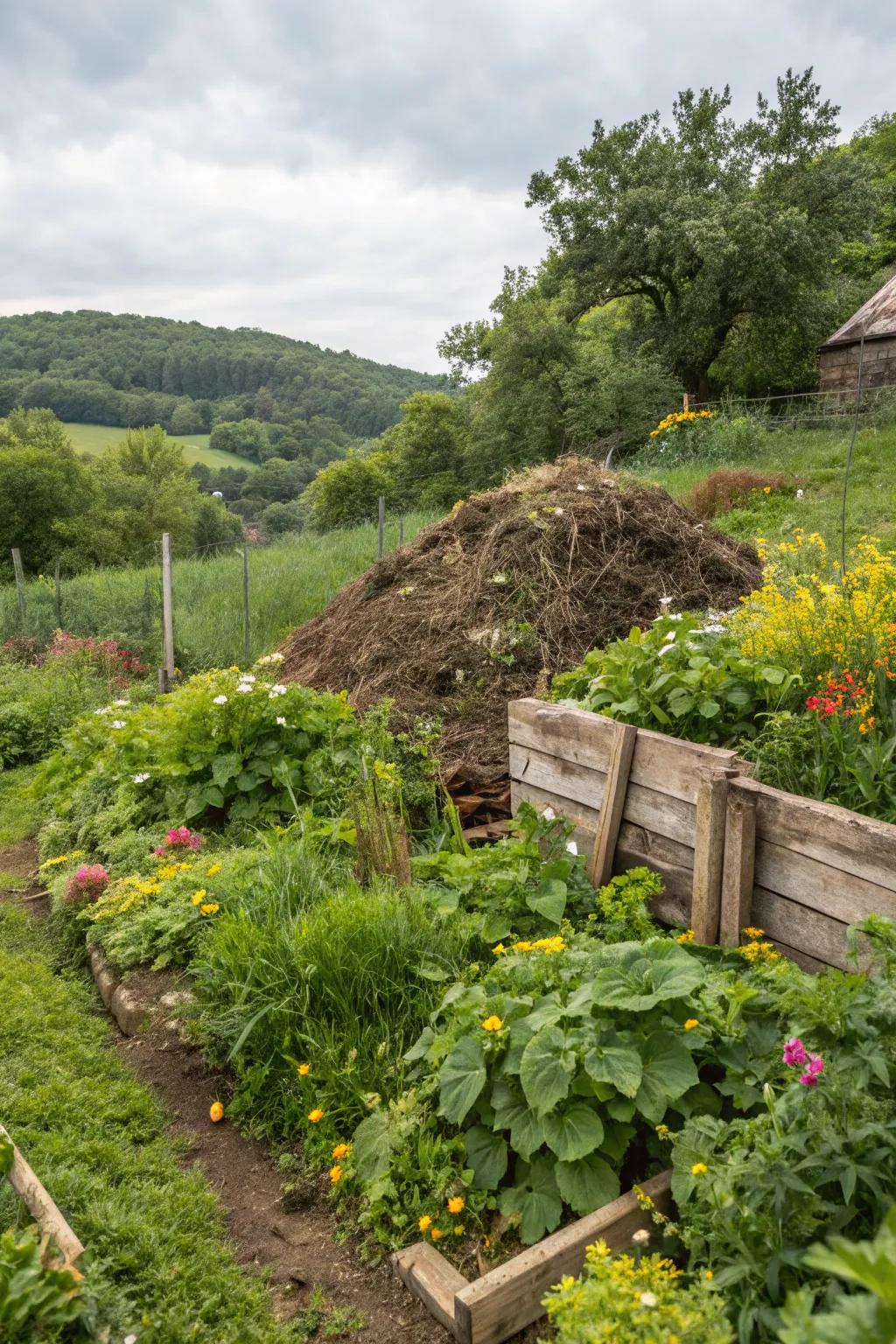
Designate a spot for a compost pile to recycle garden waste. My plants have thrived with the nutrient boost from homemade compost.
Useful items to consider:
- Compost Bin: Boost your garden’s growth; contain compost efficiently with a sturdy, weather-resistant compost bin.
- Compost Aerator: Enhance compost breakdown; use an easy-to-handle aerator to improve airflow and compost quality.
- Compost Thermometer: Monitor compost temperature; ensure optimal conditions for faster decomposition with this reliable thermometer.
12. Sun Soaking Strategy
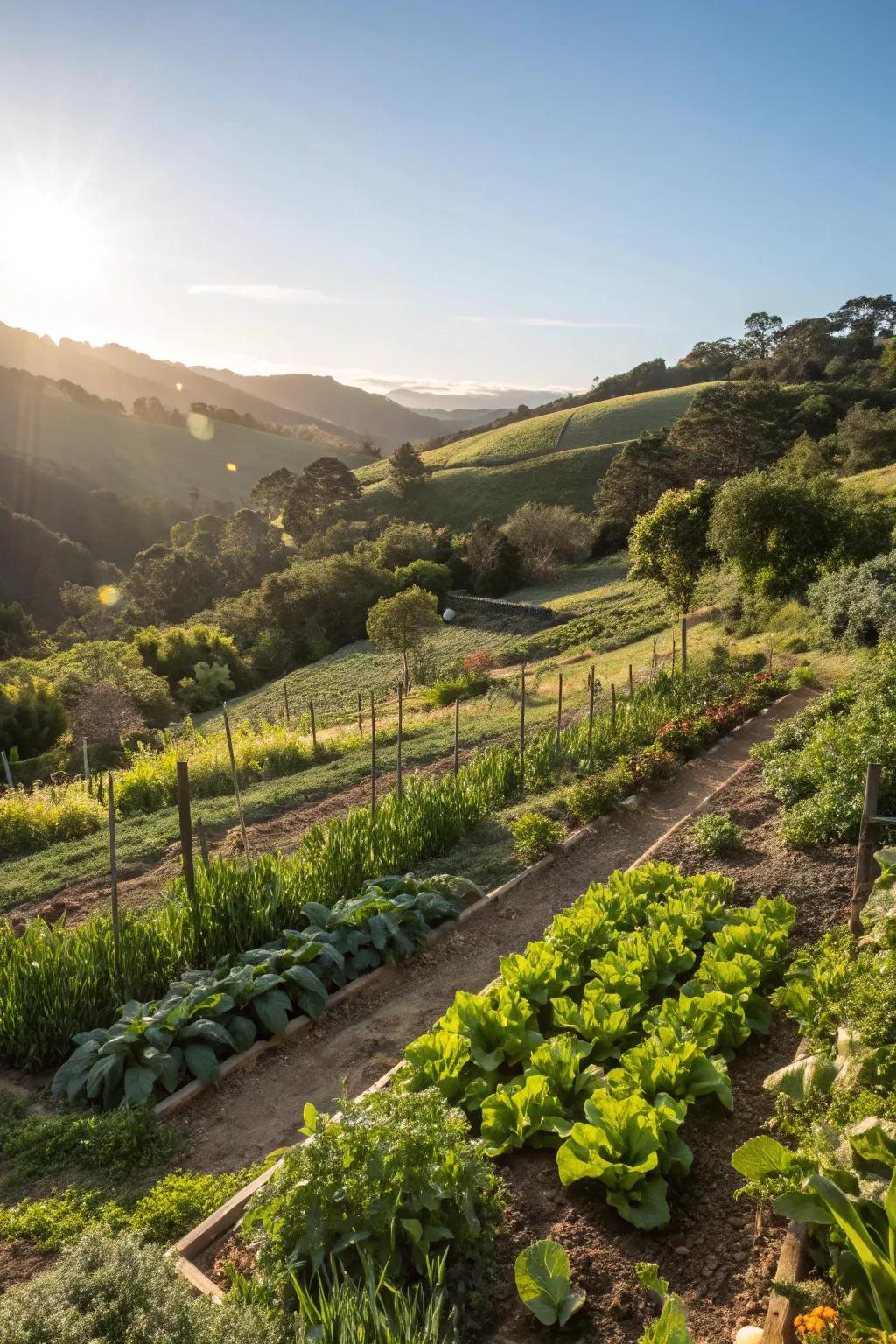
Orient your garden to the sun for maximum exposure. My south-facing slope has been a sunbather’s paradise for my plants.
Possibly handy products:
- Adjustable Solar Garden Lanterns: Illuminate your hillside garden with solar lanterns for an enchanting evening ambiance.
- Heavy Duty Garden Stakes: Secure your plants on a slope with sturdy stakes for maximum sun exposure.
- Multi-Tier Raised Garden Beds: Optimize sun exposure with tiered garden beds perfect for hillside planting.
13. Herb Haven
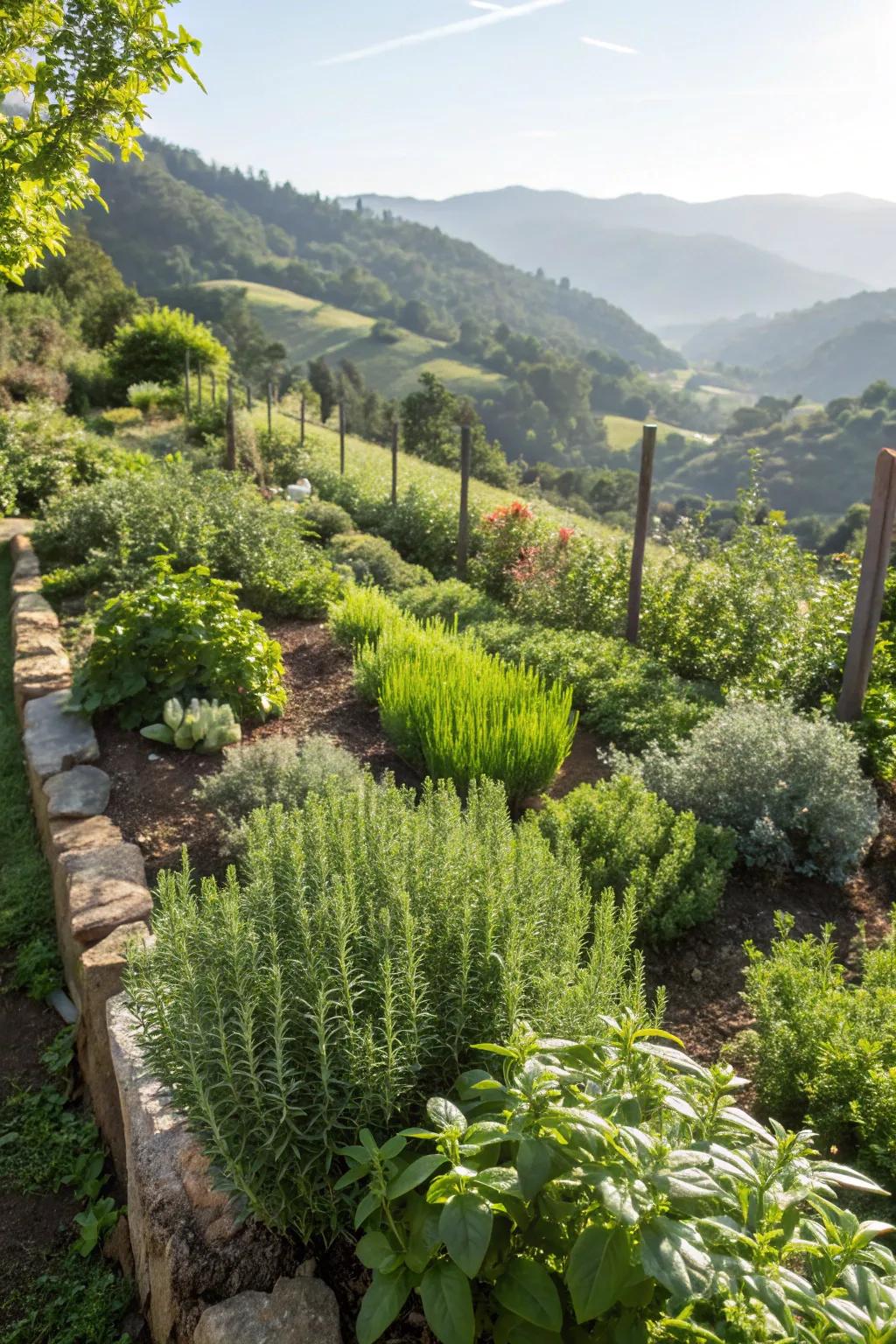
Set aside a section for an herb garden to complement your veggies. It’s been a fragrant delight in my hillside paradise.
Might be a good match:
- Raised Garden Bed Kit: Create a structured herb garden with ease. Perfect for maintaining organized growth on slopes.
- Herb Seed Starter Kit: Kickstart your herb garden with this starter kit. ideal for beginners and enthusiasts alike.
- Automatic Drip Irrigation System: Ensure consistent watering for your herbs. Simplify irrigation with this automated system.
14. Stepping Stone Styles

Create pathways with stepping stones for a whimsical touch. They’ve made my garden feel like a fairy tale.
May just do the trick:
- Garden Stepping Stones: Transform your path with durable garden stepping stones. Add whimsical charm to your hillside garden.
- Stone Pathway Lights: Illuminate your garden paths. Enhance safety and aesthetics with solar stone pathway lights.
- Garden Path Edging: Define your stepping stone path with versatile garden path edging for a neat appearance.
15. Natural Integration
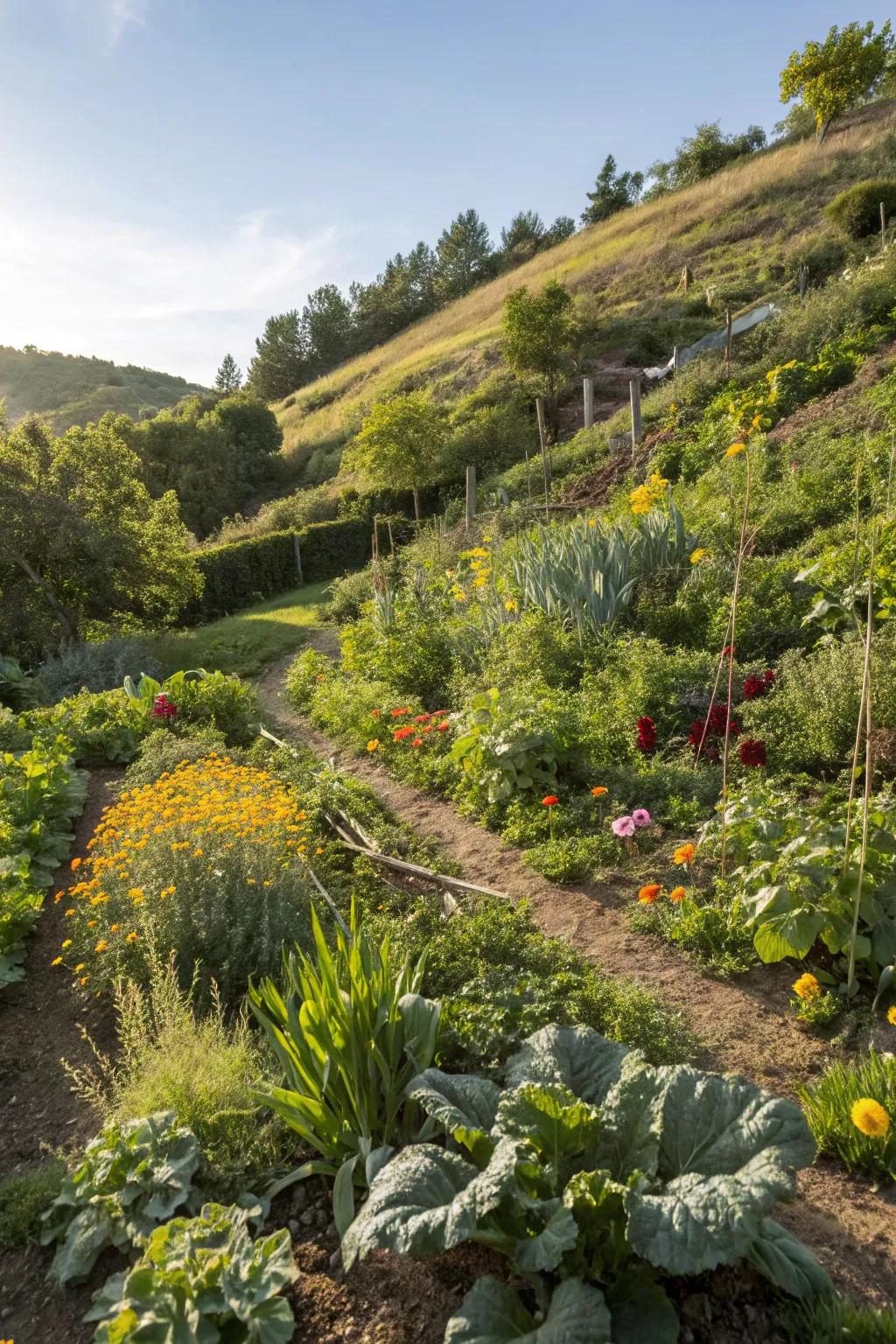
Integrate your garden with the natural landscape by using native plants around your veggies. This approach has given my garden a seamless and stunning look.
Maybe worth checking out:
- Native Wildflower Seeds Mix: Enhance your garden’s beauty by planting native wildflowers for a seamless natural landscape look.
- Organic Compost: Boost your soil health with rich organic compost to support vegetable growth naturally.
- Natural Mulch: Use natural mulch to retain moisture and enrich soil, perfect for hillside gardening.
16. Wildlife Friendly
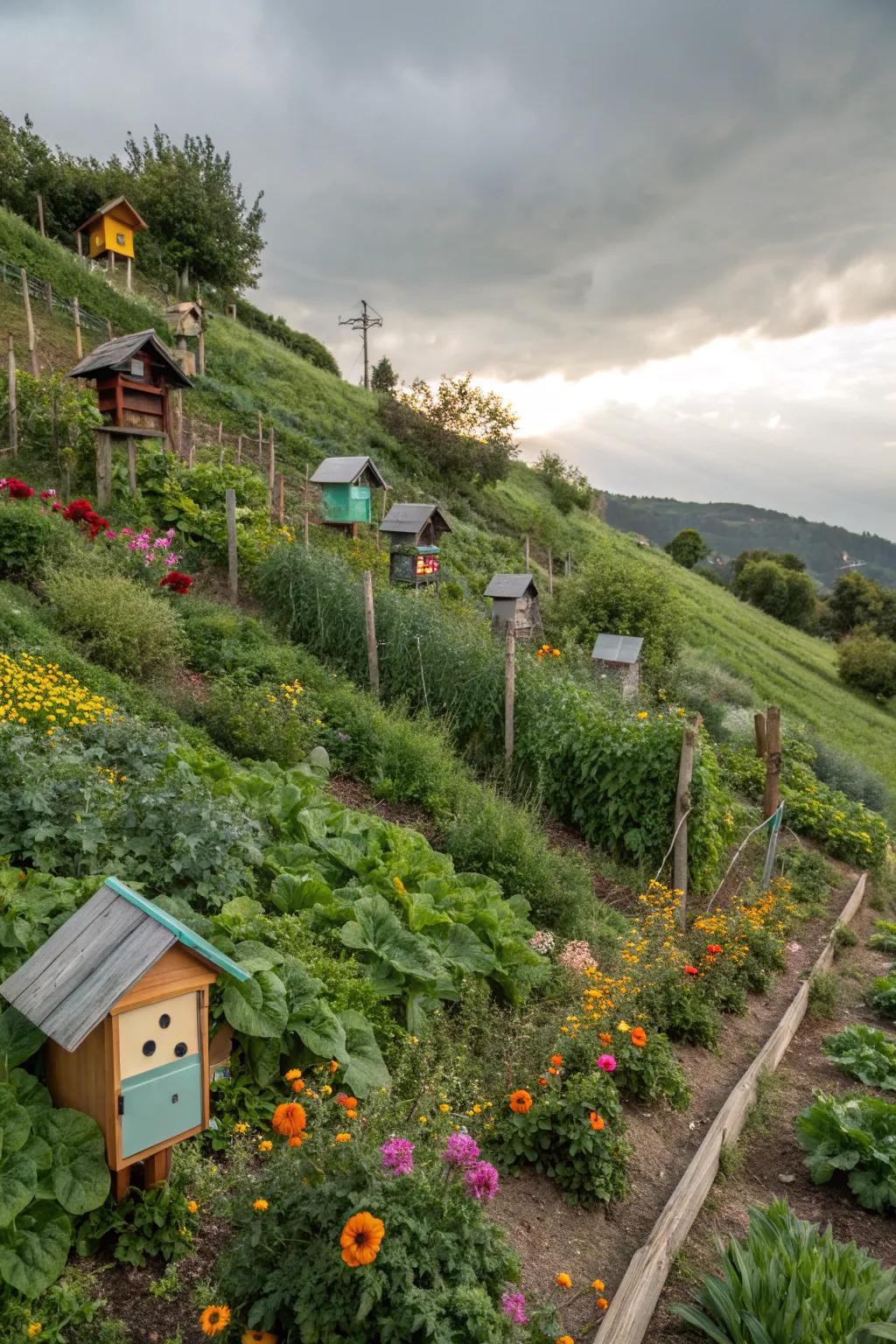
Incorporate wildlife-friendly elements like birdhouses or bee hotels. It’s delightful to see nature thriving alongside my veggies.
You might give these a try:
- Decorative Birdhouse: Enhance your garden’s charm and attract birds with this lovely decorative birdhouse.
- Bee Hotel: Invite beneficial pollinators into your garden with this beautifully crafted bee hotel.
- Insect Habitat Tower: Promote biodiversity with an insect habitat tower, perfect for encouraging helpful garden insects.
17. Cold Frame Companion
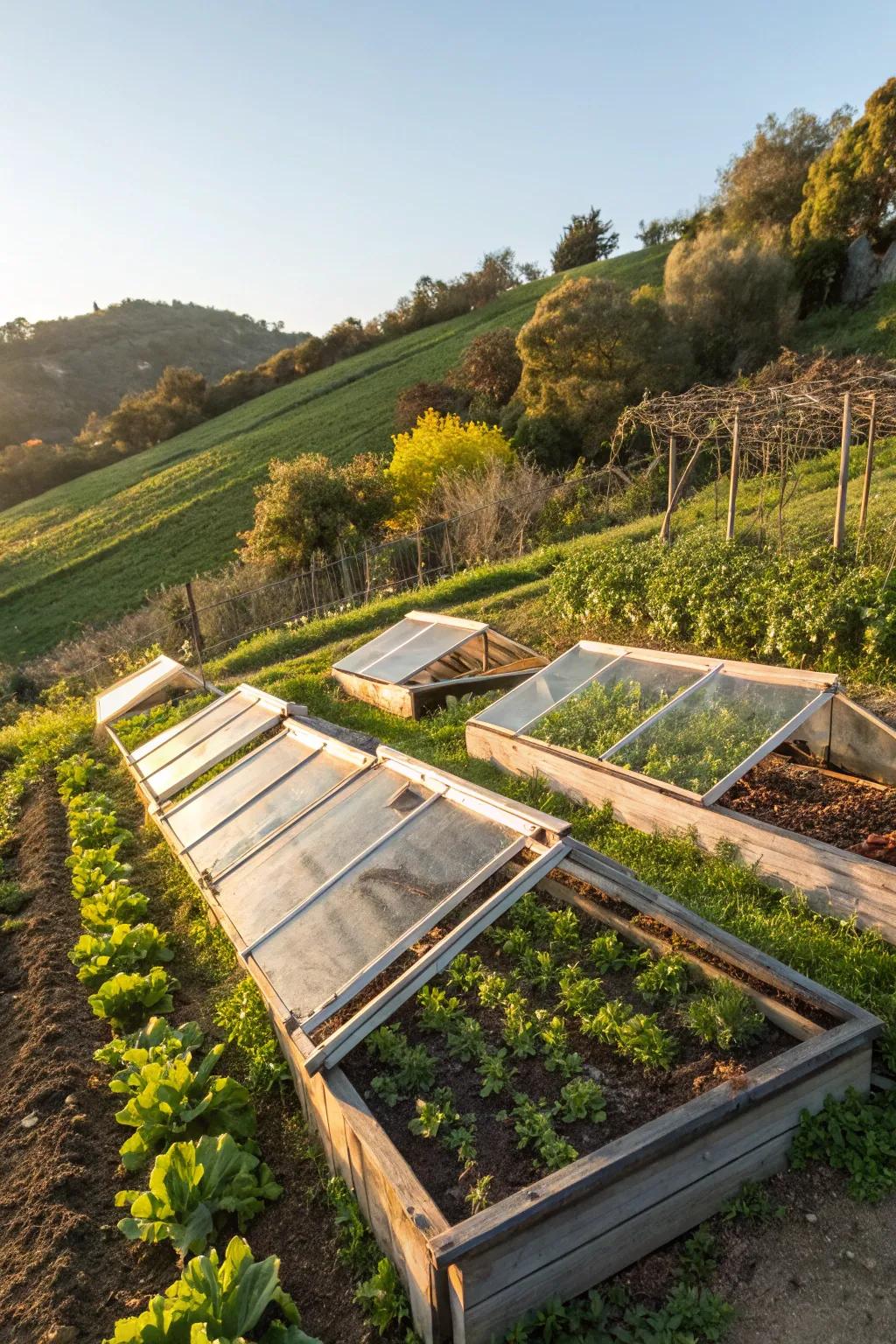
Consider using cold frames to extend your growing season. They’ve been my secret weapon against early frosts.
A few suggestions:
- Wooden Cold Frame with Adjustable Roof: Enhance your garden’s resilience against frost with this versatile wooden cold frame today.
- Polycarbonate Cold Frame Kit: Safeguard your plants from early frosts using this durable polycarbonate cold frame kit.
- Insulated Cold Frame Greenhouse: Boost your plant growth year-round with an insulated cold frame greenhouse. Start protecting today.
18. Fruitful Edges
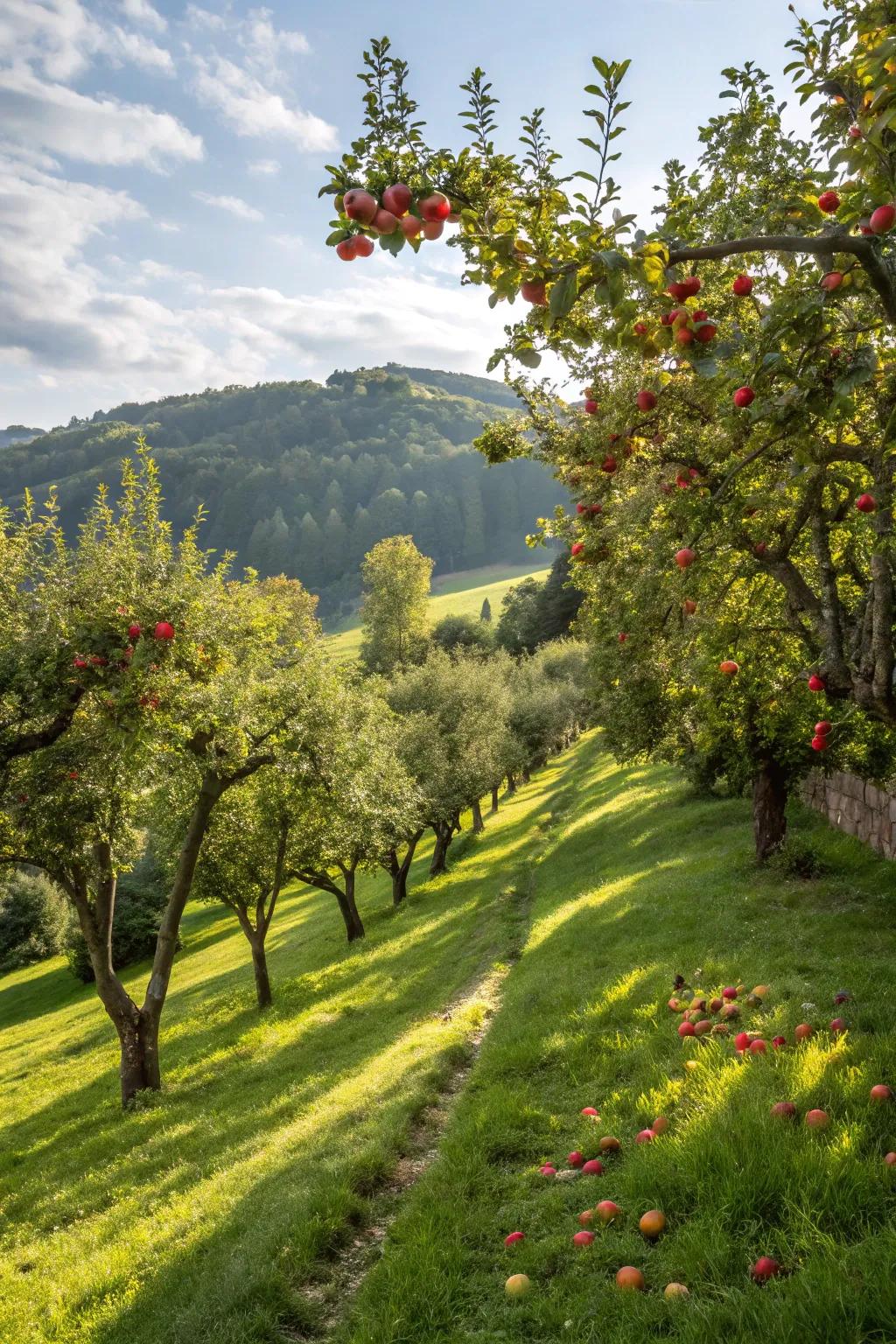
Plant fruit trees along the edges of your garden for shade and produce. They’ve added vertical interest and delicious harvests to my slope.
You might like:
- Fruit Tree Starter Kit: Kickstart your orchard with this complete fruit tree starter kit for thriving growth.
- Organic Fruit Tree Fertilizer: Enhance soil nutrition naturally with this organic fertilizer for bountiful fruit harvests.
- Adjustable Garden Tree Stakes: Support growing trees on slopes with these adjustable, durable garden stakes.
